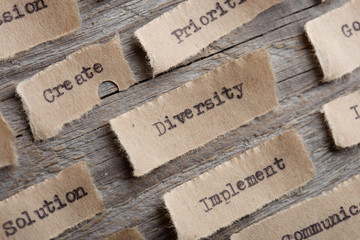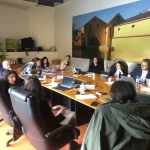What are Personas? Personas represent semi-fictional information on learners and educators, their characteristics, needs, interests and possibilities, which can include real details destined to a more accurate characterisation. They illustrate „archetypes“ or classic models, that represent a few important classes of learners‘ and educators‘ diversity. Each persona personifies a specific class or group thereof. Personas intend to simplify communication and project decision making by selecting project rules that suit real propositions of diversity in adult education. They are often based on real data gathered from previous working experience with diverse groups, e.g. by tools for identifying and understanding backgrounds, such as qualitative interviews, ethnography, narrative summaries, quantitative data. Personas, however, do NOT represent statistical average. They can be developed further, e.g. towards developing specific scenarios of learning and teaching in diverse courses, by being applied to particular courses and contexts (such as countries, institutions, courses‘ learning goals, etc.).
Which information to gather on personas? Personas may include information on learners‘ and educators‘ a) sociodemographic characteristics: e.g. country, nationality, gender, age group, education, employment status, diversity group according to Erasmus+ priorities etc. b) goals: e.g. finding a new job, obtaining a qualification, completing a course, enhancing self- confidence, strengthening diversity-related skills, enabling them for peer counselling etc. c) motivations and interests, needs and challenges: e.g. why learners take part in a particular course, what are their particular needs and challenges when participating in the course (e.g. people with disabilities, with learning difficulties, etc.) d) their relation to resources and opportunities, challenges and risks associated with inclusion and diversity, manifest e.g. in the Erasmus+ priorities.
What are pro’s and con’s, advantages and disadvantages of the personas approach? A common critique on the personas approach is that personas may reproduce stereotypes (a stereotype can be interpreted as a preconceived opinion). In order to prevent to fall back on stereotypes, it is useful to regard personas as archetypes, not as stereotypes, and clarify that personas are fictitious representations, not real persons’ data. Another critique is that personas may enforce a market-based approach towards diversity and adult education. However, it is important to realize that the diversity concept itself is close to markets, and that the economisation of education independent thereof. A third critique is, that the personas approach may substitute other approaches. This point can be prevented when combining personas with other approaches, e.g. scenarios of learning and teaching.
In contrast to this critique, however, there are a lot of advantages of the personas approach to be mentioned as well: Personas offer a realistic, simple way of working with diversity in adult education. They provide visual illustrations easy to be understood and used, and they can represent large and diverse groups. Moreover, personas can complement additional approaches and methods, e.g. the scenarios technique. The personas approach enables us not to fall back on homology, that is: taking the own narrow, restricted experience as a basis for modeling typologies. Personas help us to step back from
our content and our own biases. They allow us to see things from the perspective of our intended users and understand their unique needs and expectations. By doing this, we gain insights into what our learners truly need and how we can meet their expectations.
How can personas be linked to Erasmus+ priorities? Personas can be linked to Erasmus+ priorities regarding its inclusion and diversity strategy. Erasmus+ priorities take eight particular „barriers“, difficulties or challenges for learners and educators into account, which reflect the accessibility and outreach of adult education (see two documents: Erasmus+ programme guidelines; Erasmus+ implementation guidelines for inclusion and diversity):
- disabilities
- health problems
- barriers linked to education and training systems
- cultural differences
- social barriers
- economic barriers
- barriers linked to discrimination:
- geographical barriers
Further reading:





